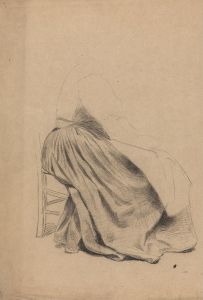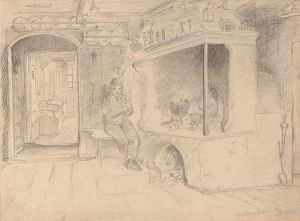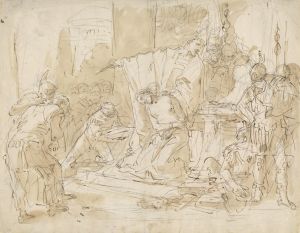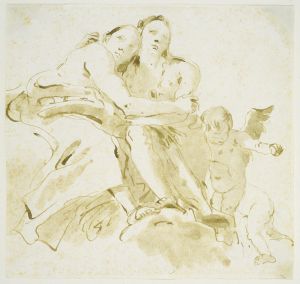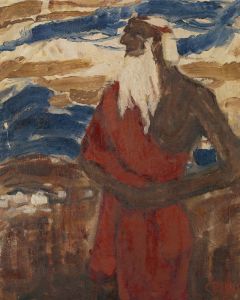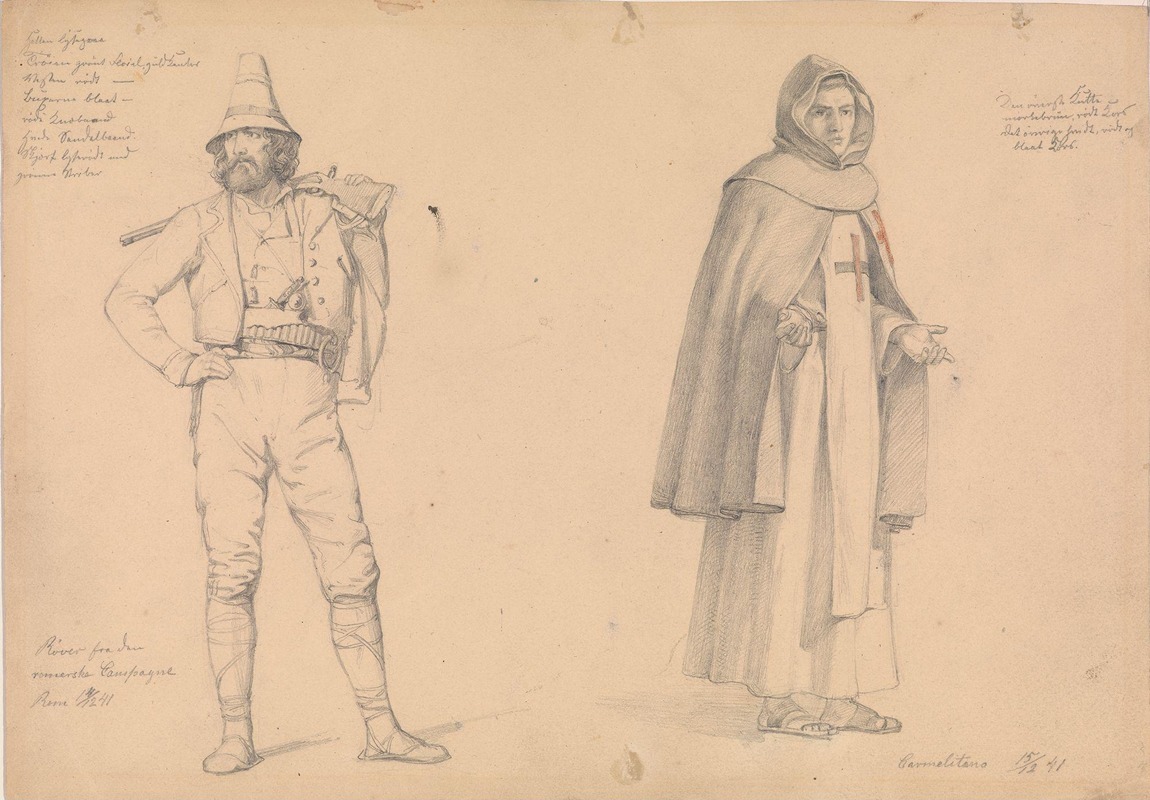
Røver og karmelittermunk
A hand-painted replica of Adolph Tidemand’s masterpiece Røver og karmelittermunk, meticulously crafted by professional artists to capture the true essence of the original. Each piece is created with museum-quality canvas and rare mineral pigments, carefully painted by experienced artists with delicate brushstrokes and rich, layered colors to perfectly recreate the texture of the original artwork. Unlike machine-printed reproductions, this hand-painted version brings the painting to life, infused with the artist’s emotions and skill in every stroke. Whether for personal collection or home decoration, it instantly elevates the artistic atmosphere of any space.
Adolph Tidemand (1814–1876) was a prominent Norwegian romanticist painter known for his detailed and evocative depictions of Norwegian folk life and history. One of his notable works is "Røver og karmelittermunk" (The Robber and the Carmelite Monk), which showcases his skill in capturing dramatic and emotional scenes.
"Røver og karmelittermunk" was painted in 1842 and is a significant example of Tidemand's early work. The painting illustrates a dramatic encounter between a robber and a Carmelite monk, a theme that reflects the romantic fascination with historical and religious subjects. The scene is set in a dark, atmospheric environment, which enhances the tension and drama of the moment.
In the painting, the monk is depicted in his traditional Carmelite habit, characterized by its white cloak and brown tunic, which contrasts sharply with the rugged appearance of the robber. The monk's expression is one of calm and compassion, suggesting a moral and spiritual strength in the face of danger. The robber, on the other hand, appears tense and conflicted, adding to the narrative depth of the scene.
Tidemand's use of light and shadow in "Røver og karmelittermunk" is particularly noteworthy. The light source seems to emanate from an unseen point, illuminating the monk's face and casting the robber in partial shadow. This technique not only highlights the central figures but also creates a sense of mystery and foreboding.
The painting is a testament to Tidemand's ability to convey complex emotions and narratives through his art. His meticulous attention to detail, especially in the rendering of the monk's habit and the robber's rugged clothing, adds to the realism and authenticity of the scene. This attention to detail is a hallmark of Tidemand's work and contributes to his reputation as one of Norway's foremost painters of the 19th century.
"Røver og karmelittermunk" is housed in the National Gallery of Norway, where it continues to be appreciated for its artistic and historical significance. The painting is an excellent example of Tidemand's early exploration of themes that would come to define his career, including the interplay between light and shadow, the depiction of historical and religious subjects, and the focus on human emotion and drama.
Adolph Tidemand's work, including "Røver og karmelittermunk," played a crucial role in the development of Norwegian national romanticism. His paintings often drew on Norwegian history, folklore, and rural life, contributing to a growing sense of national identity and pride during a time when Norway was seeking to assert its cultural independence.
In summary, "Røver og karmelittermunk" by Adolph Tidemand is a significant work that exemplifies the artist's early style and thematic interests. The painting's dramatic composition, emotional depth, and meticulous detail make it a valuable piece of Norwegian art history.










